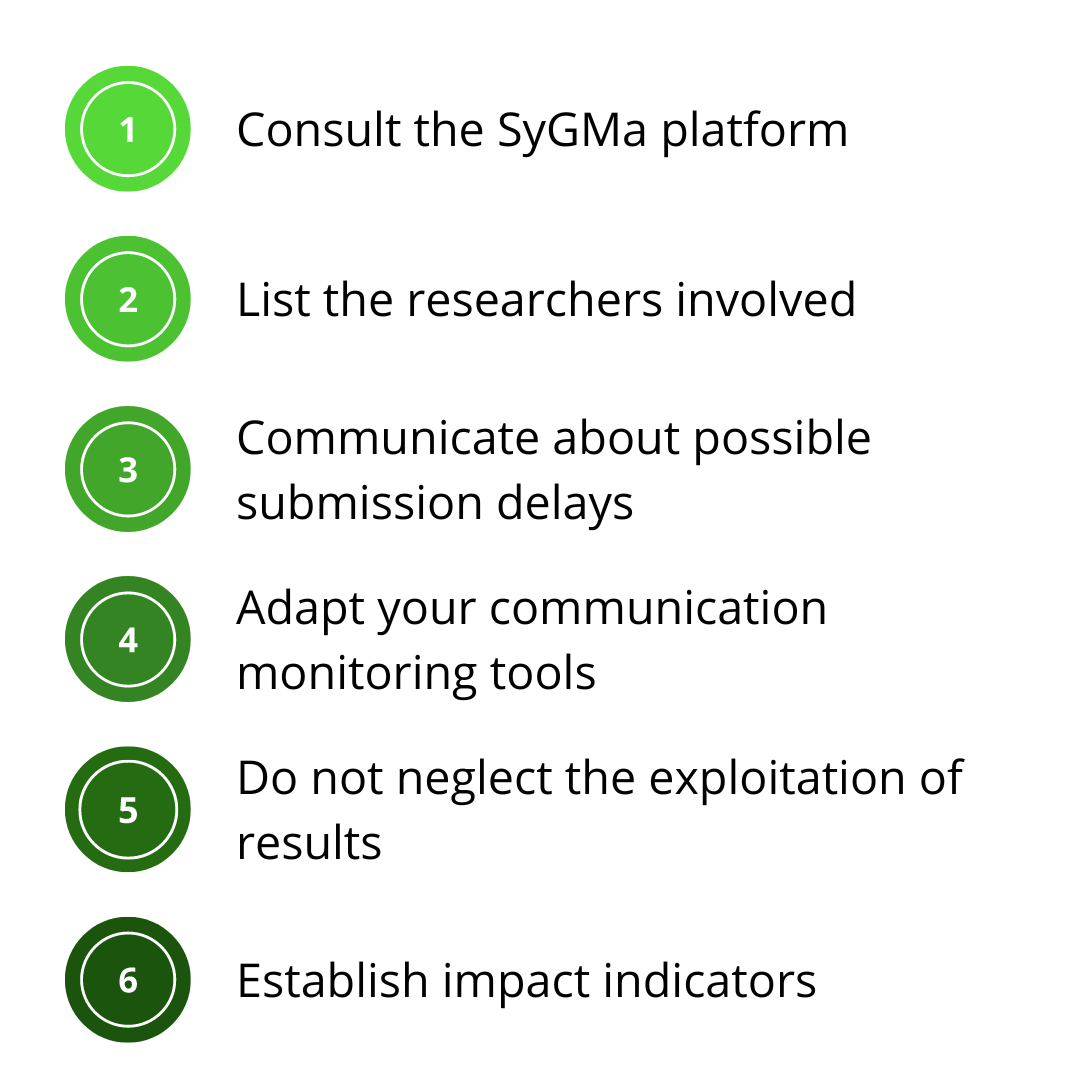You have gone through the tough selection stage of the Horizon Europe program, and your research and innovation activities are now funded. During the whole duration of your project, it will be subject to a continuous reporting by the European Commission. What does this mean? Euronovia is here to guide you.
Continuous reporting vs Period reporting
Like all Horizon 2020 projects, a Horizon Europe project is subject to two levels of reporting allowing the European Commission (EC) to ensure the proper implementation of its activities. One is continuous and the second is periodic. Periodic reporting usually takes place every 18 months with the submission of technical and financial reports. The continuous reporting is done on an ongoing basis directly on the EC’s project management platform, SyGMa. The submission of your deliverables is one part of the continuous reporting, but you also need to provide a certain amount of other information about your project activities. This is why it is important to learn some best practices and develop specific tools to ensure an effective continuous reporting.
Our 6 tips
Here are 6 good practices to facilitate the continuous reporting of your projects and avoid mistakes:
- Consult the SyGMa platform at the beginning of your project. If you got used to the SyGMa platform (System for Grant Management) for your H2020 projects, you will have to go visit it again to discover the new sections and information requested for Horizon Europe.
- List the researchers involved. Each institution must identify the researchers working on the project, right from the grant application phase. During the implementation phase of the project, a dedicated section on the project management platform allows each partner to keep this information up to date. It is important to regularly ensure that the right people are listed.
- Communicate about possible submission delays. The deliverables and milestones of projects are expected by the European Commission on specific dates according to your grant agreement. However, it may occur that some of them are not ready for the announced date. This is not a problem as long as these delays are not too important and are anticipated, communicated to the Project Officer, and a new date is proposed through the platform.
- Adapt your communication and dissemination monitoring tools. Throughout the project, it is mandatory to carry out communication and dissemination activities. These activities are usually implemented by a dedicated partner and defined in the first six months of the project. It is important to ensure that all necessary activities are implemented to achieve the expected results. Right from the start of your project, you should prepare the monitoring tools for the communication and dissemination actions implemented by each partner, as well as for the publications. For each action, it is necessary to describe the activity implemented, indicate the means used, list the types of audience targeted, and evaluate the results of the action.
- Do not neglect the exploitation of results. It is useful to identify project results early enough to prepare appropriate exploitation strategies. The European Commission offers a dedicated service, the Horizon Results Booster, to help consortia with the exploitation. As soon as possible, partners should be asked to identify their exploitable results, whether or not they are commercial, in order to set up appropriate strategies, particularly in terms of sharing results and intellectual property rights.
- Establish impact indicators. With Horizon Europe, the European Commission gives a more important place to impact indicators for the monitoring of the projects. While with Horizon 2020, it was mainly required to quantify a certain number of indicators, it is now necessary to carry out more qualitative evaluation. For example, it is required to assess the extent to which the project contributes to the Sustainable Development Goals (SDGs), to provide information on civic engagement or to assess the continuity of the exploitation of the results until one year after the end of the project. In addition to listing the activities that have been carried out, an analysis is therefore necessary to assess their impact.
Be well informed and supported! Following a training in European project management at the beginning of your project is also a good way to have the right tools and to know the best practices.
Euronovia supports project management and offers trainings for teams in charge of managing Horizon Europe projects. Do not hesitate to contact us for customized training.
In summary

